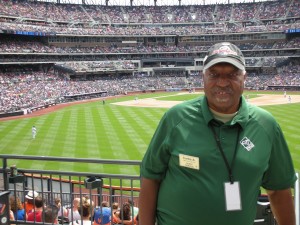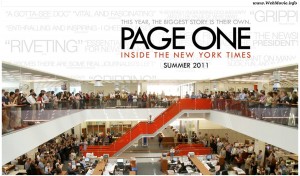Curtis Ashby is a people pleaser. Always has been, always will be. “For me,” he says. “It’s always been about the people.” His steely eyes never leave the fans he ushers down to their seats, yet his focus on our conversation never wavers.
He catches my name instantly. Casually. He never makes a fuss about it. Being honest, I’m perfectly sure he’s forgotten it.
Born in Harlem, N.Y. in 1946, Ashby grew up a Brooklyn Dodgers fan. But in 1957, after years of bickering with New York City Construction officials over the location of a sorely needed new stadium, Dodgers majority owner Walter O’Malley moved the team to Los Angeles.
It was a move made in the best interest of his team — and himself, but it was wildly unpopular amongst Brooklyn fans. Yet Ashby remained hopeful a team other than the Yankees would come along and breathe new life into a baseball city still reeling from two defections. (New York had also lost the Giants to California in the same season.) He wouldn’t have to wait long.
The New York Mets came along in 1962, and Ashby again had a team he could root for, though it wasn’t always easy. In their inaugural season, the Mets finished 40-120, which to this day remains the worst single-season record in the history of Major League Baseball. But as Ashby grew up, so too, did the Mets.
He took his first job in customer service with the New York public transit system in 1966. In 1969, the “Miracle Mets” won the World Series. By the time he chose to retire from his job in public transit in 1996, the Mets had won yet another title. As New York grew to embrace the Mets, Ashby further embraced his job. For 30 years he worked in public transit, endlessly inspired by a single ideal.
“People would come to me to complain. They were frustrated and angry, and I’d try my best to help them out. When ever I can give assistance to people, if they can walk away from me satisfied, it gives me pleasure. Simple as that.”
By 2003, Ashby, seven years retired, had had enough. “I wanted to go back to work.”
Which brings us, full circle, back to the Mets.
There’s an old Confucius adage: “Choose a job you love, and you will never have to work a day in your life.” Nobody knows that better than Curtis Ashby.
“I’ve always loved baseball. I’ve always loved working with people. So I figured, why not put the two together.” And so he did, and has ever since.
In 1958, Ebbets Field, home of the Brooklyn Dodgers, was demolished. In 2009, Shea Stadium, home of the New York Mets, was demolished. In 2013, Citi Field, located in Queens, is the beautiful new home of the Mets, and Curtis Ashby is a satisfied man.
“I don’t know if you can tell,” he chuckles. “But I’m getting pretty old. But life…” He stops to ruminate, waving patrons past who slow down to show him their tickets stubs. “Life isn’t about your age, it’s about your spirit. And I’ve still got a young one.
“Here, I still get to meet people, and I know that everyone I’m meeting shares at least one thing in common with me — they like baseball. This job gives me a chance to be around happy people every day.”
There’s a crowd forming near section 101, and Curtis’ eyes dart from me to the crowd. “I’d love to keep chatting,” he starts with a sly smile. “But I have to do my job.” I hastily shake his hand, thank him for his time, his tales, his truths. It’s been a pleasure, I tell him.
“No,” he says. “Marc, the pleasure was all mine.”
It’s been nearly 15 minutes now since I’ve told him my name, yet there he is, reciting it as if he’d learned it moments before. Granted, it’s a one syllable name, but I’m shocked nonetheless. As I retreat, I glance back once more at the man who’d rather work than retire.
As Mets fans file past toward their seats, there’s Curtis chatting, waving, grinning. He’s held two different jobs for a combined forty years now, but in that moment, I know the truth.
Curtis Ashby hasn’t worked a day in his life.


